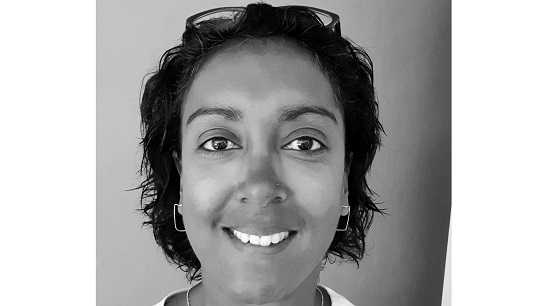
Cecilia Harvey, chair of Maritime UK's Ethnicity in Maritime network, shares her thoughts on intersectionality in Pride Month.
It's easy to look up the meaning of intersectionality in the dictionary, but what does it really mean to someone's daily life when they are part of two or more different, diverse groups?
June is Pride month in the UK and many other countries. It is a chance to celebrate LGBT+ communities, and a chance to show allyship for those who do not identify as LGBT+. As chair of Ethnicity in Maritime, I would like us to reflect on how many more layers of complexity there are for those who are part of two (or more) minority groups.
Research shows that when identifying in such a way, you are much more likely to face double discrimination, and a number of other barriers – fewer chances to break through glass ceilings and fewer opportunities to be treated fairly, progressing fairly and equitably – in education, in your career and throughout daily life. It is widely known that being BAME and LGBT+ can mean people face discrimination from religion, culture, friends and family as well as in the workplace.
I am an ally to the LGBT+ community and I have not personally faced the issues that many LGBT+ people face. I am however intersectional – a black female, working in a white and male dominated industry. I have felt and been told in more than one instance throughout my career that I was picked for this or that because of being 'the token diverse element'.
When you receive microaggressions daily and from different sources, you start to question yourself. Imposter syndrome can flare up and your own identity is very much impacted. I cannot say I receive them daily, but I have had more than my fair share.
Nowadays I tend to bat these microaggressions off, or I am equipped with a series of retorts ready to silence the perpetrator. Nevertheless, we should not accept any form of exclusion or disrespect and should be ready, in the appropriate manner, to call it out!
In February I had the pleasure of hosting a guest speaker for LGBT+ History Month who really opened my eyes on intersectionality and the two minority groups he was part of. Listening to his personal and unique situations, he told us of words and discrimination that I could not identify with. Though I am intersectional myself, I had never been exposed to them. It certainly made me think of the effects on one's psychological safety as well as physical safety.
Our friends and colleagues in the industry, who do not identify with any diverse grouping, can use their privilege to support others, such as BAME and LGBT+ people, by ensuring that people know them to be an ally to others.
Those of us in one diverse group can also support others, as Debbie Cavaldoro, co-chair of the Diversity in Maritime Taskforce, recently wrote in Telegraph. Those of us in more than one group can use our experiences – good and bad – to show others the unique challenges faced by intersectional people.
The important thing is that together we can push boundaries. Together we can challenge systems, institutions and people who perpetuate all forms of inequality. By understanding diversity and intersectionality we should be able to understand privilege. To be able to do both things we need to be prepared to listen to real-life experiences.
Tags
More articles
For the record - the story of a trans maritime professional
How to be an out and proud ally
Nautilus marks June 2021 Pride Month with member events and LGBT+ support survey
Nautilus International is inviting members and maritime professionals to celebrate Pride Month, which takes place every June around the anniversary of the Stonewall Riots in the USA.
